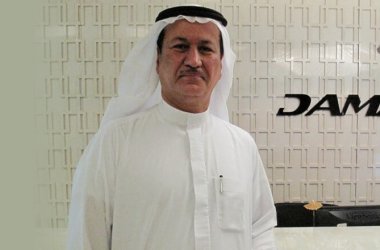 Defence companies can effectively “put a red line through public cloud offerings” because of the security risks involved, according to a senior IT solutions manager at Swedish military equipment manufacturer Saab.
Defence companies can effectively “put a red line through public cloud offerings” because of the security risks involved, according to a senior IT solutions manager at Swedish military equipment manufacturer Saab.
Christer Nordlander spoke to Computerworld UK at IFS’ World Conference in Sweden this week, where he explained how the company is consolidating six instances of its IFS ERP version 7.5 into one core instance, which will go live using IFS’ latest offering, Application 8.
However, when asked if Saab would ever consider applications in the cloud, Nordlander was adamant that this would never be an option for a defence company.
He said: “Security means we can’t have it in a public cloud. You can just put a red line through that before you even start to think about it.
“I don’t think it will ever change, the security reasons affect us too much.”
Nordlander said that he wasn’t particularly concerned about downtime, which is a common cause of concern when moving to a public cloud offering, but said that it was just too difficult to hand its data over to a third party.
However, Saab is looking to cut costs by consolidating its IFS ERP – a project it hopes to complete by 2016 and will be used by 10,000 employees. Although Nordlander did hint that this timeline may be pushed back if Saab makes any acquisitions or sells of any companies.
“When we started with IFS, different companies and business areas chose it by themselves. In the beginning there wasn’t any IFS strategy at all, that’s why there were several installations. Now we are going for one consolidated approach,” he said.
“The plan is to fold our six current instances into one. We started this year and will put the first two onto the central Application 8 instance next year. The remaining four instances will follow.”
He added: “It’s going to significantly lower our costs. We will have one common Saab contract, whereas we had fragmented licencing prior to this. We will also spend less on the hardware, the maintenance, upgrades etc. It’s all so much easier.”
Nordlander wasn’t willing to reveal how much Saab was going to spend or save on the project.
He said that the biggest challenge was going to be ensuring that the one common solution is accepted by all parts of the Saab group. He said: “We are used to handling ourselves, choosing our own way of working. That’s a big change.”
To ensure that this isn’t too much a problem, Nordlander is taking a phased approach.
“We started with one pre-study, just to give us a rough idea how it will work. We are now in the progress of getting the first two instances onto the common platform, but we are not creating the solution for all six at the moment,” he said.
“We are just doing it for what the first two need at the moment. When the third comes in, we will make it work for them too.”
Finally, Saab can expect some new capabilities by upgrading to Application 8, where it is working with IFS on developing new additional modules.
“We are developing an export licences module together with IFS. When we export military equipm,ent we have to keep track from the very beginning what we are buying, when we ship it, whether we have licences for everything. That’s quite tricky to do when you sell an aircraft. Most of it is being done manually at the moment,” said Nordlander.
Fellow IFS user Babcock is in the process of consolidating five instances of its IFS ERP system into one, in a multi-million project that follows the consolidation of the group’s IT estate into a centralised infrastructure.





